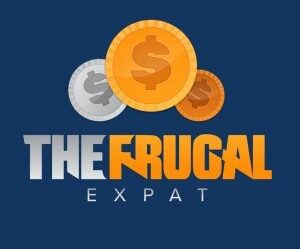We all know that nothing in this world is free, so how do some traditional banks offer free checking accounts and free savings accounts? Banks continually spend money by sending us our debit cards, periodic statements and supporting the digital infrastructure needed to process online payments and transactions.
With so many free and discounted services, how do banks make money?
In addition to free services, in the past, banks were able to offer high-yield savings accounts that paid a significant amount, like 4% or more! However, while these high yield accounts still exist, they are no longer offering such generous returns. High yield accounts payout today slightly over 1%.
What Exactly Is A Bank?
Banks are financial institutions that are legally allowed to receive money from depositors (customers like you and me) and use that money to issue loans to other customers. However, this is the most basic function of a traditional bank and not an all-encompassing answer.
Many different types of banks provide specific functions for different customer types. Some banks serve national governments as regulatory bodies, while others cater to individual investors and customers' needs.
Different Types Of Banks
Before we dive into how banks make money, we need to understand there are different types of banks, and they all make money in different ways.
Retail Banks
Retail banks are the most commonly known because these are the brick and mortar banks most individual customers use to deposit their money and take out loans for vehicles and home mortgages.
Commercial Banks
Commercial banks are similar to retail banks because they serve individuals and small businesses. These banks cater to small business loans and other smaller financial products available to individual investors.
Central Banks
Central banks cater to the needs of governmental agencies and help countries reach economic goals. These banks create and manipulate monetary policy to control the amount of currency available in the economy and governmental interest rates.
Credit Unions
Credit unions are owned by their members and not by a corporation. Because of the membership held status, credit unions are usually small local operations that provide a limited number of services. The benefit of credit unions is they typically charge lower fees to members than retail banks operated by corporations.
How Do Banks Make Money?
This post will speak directly about retail and commercial banks. Many different financial institutions make money in various ways (i.e., through investments), but the brick-and-mortar stores are our focus in this post.
Banks make money from three primary income structures. They make money from net interest margins, fees, and interchange.
In the most simple of terms, banks use your money to make money. As a banking customer, by depositing your cash in an account secured by the commercial bank, you are, in essence, giving them a free loan to use your money as they see fit.
True, your bank account balance stays the same, but those are just digital numbers or IOUs. The actual hard currency you deposited likely went to fund another person's loan.
One comforting fact is that if your bank is insured with the Federal Deposit Insurance Corporation (FDIC), your money is guaranteed up to $250,000. However, if you're fortunate enough to have $300,000 in cash sitting in the bank (even though you should invest it), $50,000 of your money is not insured by the federal government.
Loans And Other Interest-Bearing Financial Vehicles
Traditional banks use depositors money to make money off of other people in the form of financial products like:
- Vehicle loans
- Credit card payments
- Short-term loans
- Small business loans
- Personal loans
- Private student loans
- Mortgages
- Home equity lines of credit
- Other various lines of credit
- Other bank loans
Banks continue to make money off the borrower's interest over the length of the loan term. The practice of lending money to borrowers with the promise to repay the loan with interest helps the economy grow.
Defining Net Interest Margin
The above-stated ways a bank makes money and pays customers for the use of their money is known as net interest margin. When everyday customers make bank deposits, the institution uses this money to fund loans with annual percentage rates tied to them.
The money made off of these loans is one of the primary funding methods traditional banks use to keep the lights on and made additional income to lend to other borrowers.
Some of this money is income for the bank, and some of it is paid back to the bank customers in the form of interest payments to their savings accounts. To simplify this example, the difference between the money banks make from interest and the interest they pay out to customers is known as the net interest margin.
Annual Percentage Rates Are Powerful Income Sources
By lending borrowers the money from depositors, banks profit heavily from various fees and interest rates. For instance, the credit card in someone's pocket may have a 21% interest rate attached to it. Or their 30-year mortgage may be financed at a rate of 3.5%. These simple fees can result in tens of thousands of dollars in profit paid to the financial institution.
Now, if you go to the bank and want to withdraw all of your money, the bank will give it to you. But if they used your money for a loan, how do they do it? By “borrowing” from the pot of money they collected from other members.
This system works perfectly if the financial economy is constantly rotating and changing – meaning some people are taking out loans and others are depositing funds.
However, what do you think would happen if everyone decided to take their money out of the bank and put their cash under their mattress?
The truth is, the banks do not have enough cash on hand to pay everyone out at once. They would be required to call on all of the loans they had outstanding to fund all the withdrawal requests.
This happened in Greece when they faced their financial crisis. Many people went to the banks to withdraw their money and were told there was no money to give out. As you can imagine, this caused a frantic panic mode in the country, which rippled throughout Europe.
According to Investopedia, banks are allowed to use up to 90% of the deposits they receive from customers to issue out loans. In theory, only about 10% of bank clients would be able to withdraw all of their money simultaneously.
While spending 90% of your income is generally not a good budget rule, the banking industry is what keeps our economy up and running.
While some banks still offer free services, more institutions are slowly adding fees to previously free services. Some of the standard fees include:
- Late fees, such as credit card and loan late payments
- ATM fees
- Application fees or loan origination fees
- Investment commissions
- Overdraft fees
- Inactivity fees
- Wire transfer fees
- Account maintenance fees
- Bounced check fees
- Transaction fees paid by merchants commonly referred to as interchange
- Other service fees
Defining Interchange
When people use their credit or debit cards to purchase at a retail store, the store is usually responsible for paying a small fee associated with the transaction. This small fee is referred to as an interchange fee. The fee charged is mainly sent to the customer's banking institution rather than the store's financial institution.
The fees charged for interchange vary depending on the credit card used. This is why some retailers do not accept every credit card company and occasionally exclude American Express.
The fee structure is usually defined as a percentage of the total purchase price and a flat fee. This is why many retailers have a minimum purchase limit required to use a credit card.
Non-Traditional Investment Banks
Investment banks are quite different than traditional banks. Investment banks are primarily in the business of selling services to investment funds, companies, and governmental agencies. These banks typically don't deal with everyday investors.
Investment banks earn income through various avenues such as:
- Researching other companies and industries and selling the data
- Providing financial advice to clients looking for potential merger opportunities and other tax advice
- Brokering shares, products, and currencies
- Providing liquidity to companies through corporate bonds and loans
How Banking Institutions Influence Our Economy
The market crash of 2008 is one indicator of how banks influence our economy and are significantly entwined in our country's success. Large banks hold a large amount of American wealth – and make a hefty sum as well.
One of the reasons for the crash was several large U.S. banks invested a large amount of their money in subprime mortgages. These mortgages ultimately defaulted, and banks were left to deal with the extreme vacancy of available funds. To keep our economy from completely collapsing, the government bailed out some of these banks.
As previously described, the ability to loan money to consumers is an essential component of economic growth. This system is known as the fractional reserve banking system, allowing banks to lend out up to 90% of the deposits they receive from customers.
This article originally appeared on Wealth of Geeks and has been republished with permission.
Support This Blog
If you really enjoyed this blog post, please do us a favor and share this post! Not only does it help spread this content, but it shows me what posts people like so I can write more like it.
You can also support this blog by going to my resources page and purchasing through the links. Not all links are affliates, but they are some of my favorite things that I like to share with my readers.
” Spend less than you make, stay out of debt, and invest the rest”

Ryan Luke is a father of three, husband, financial coach, and full-time police lieutenant. His inspirational story about his struggle to make ends meet, to paying off his home in less than 10 years, has been featured on MarketWatch, Fox Business, MSN, and other media outlets.







